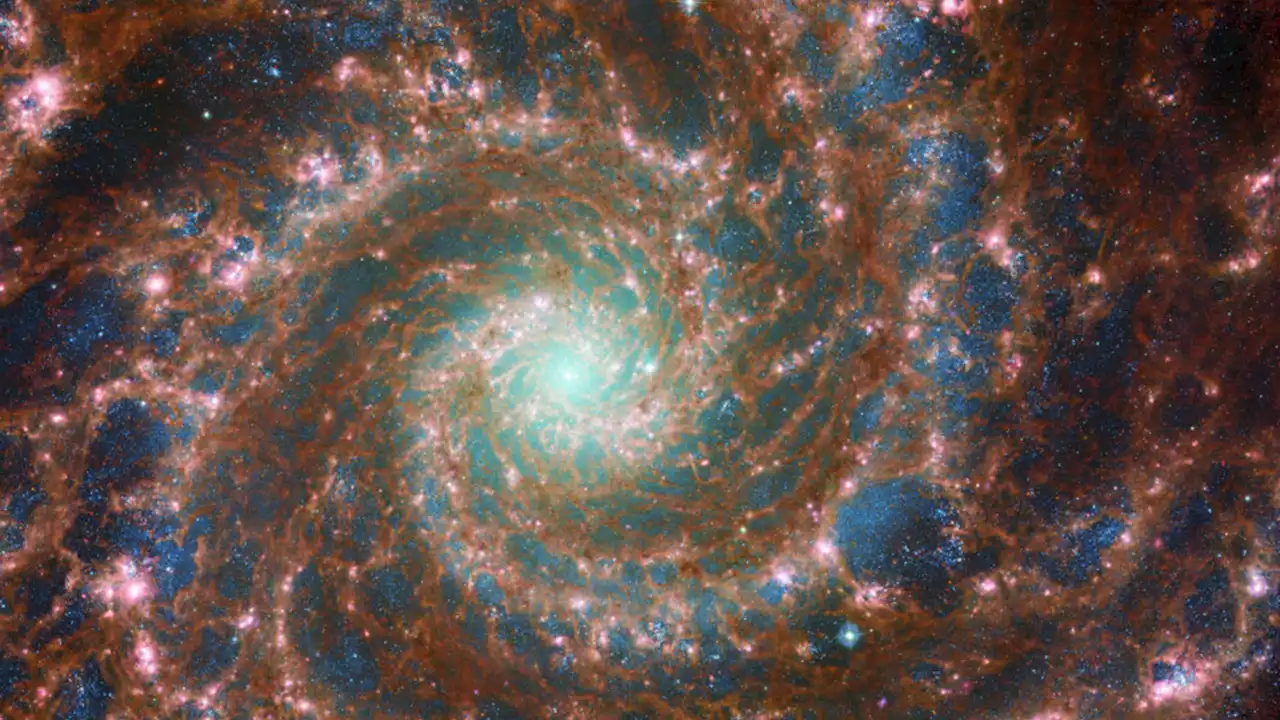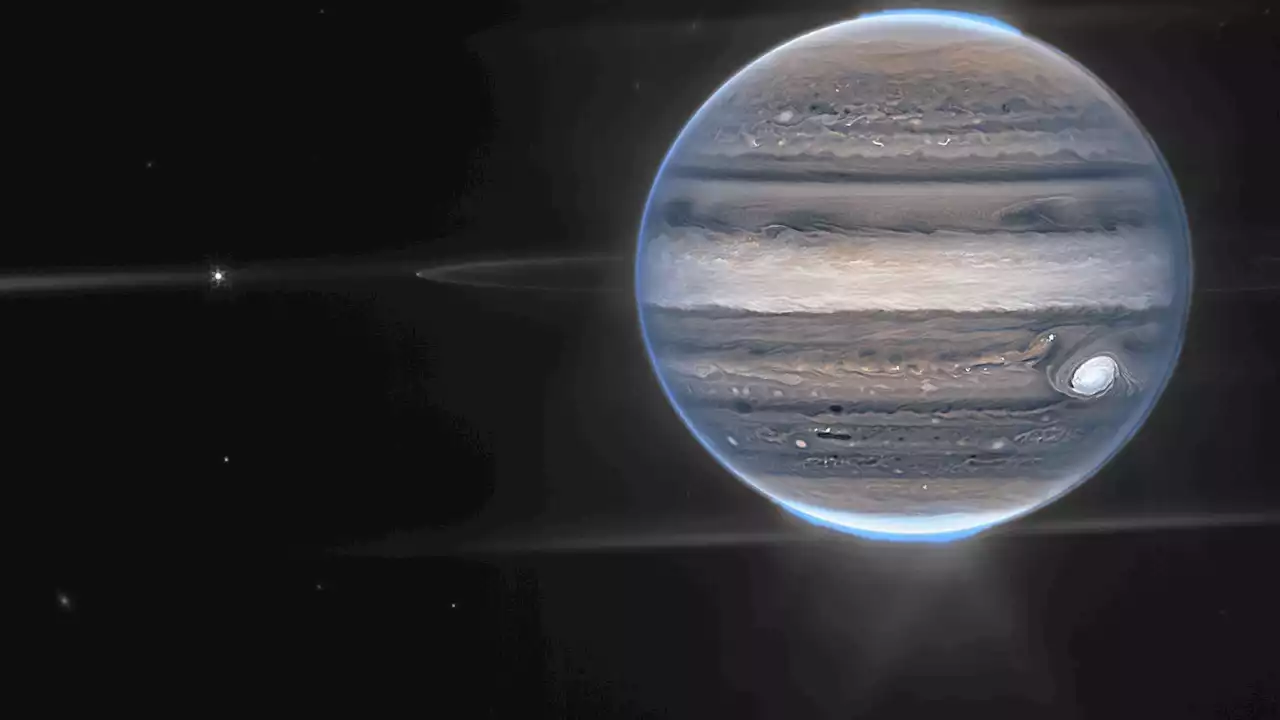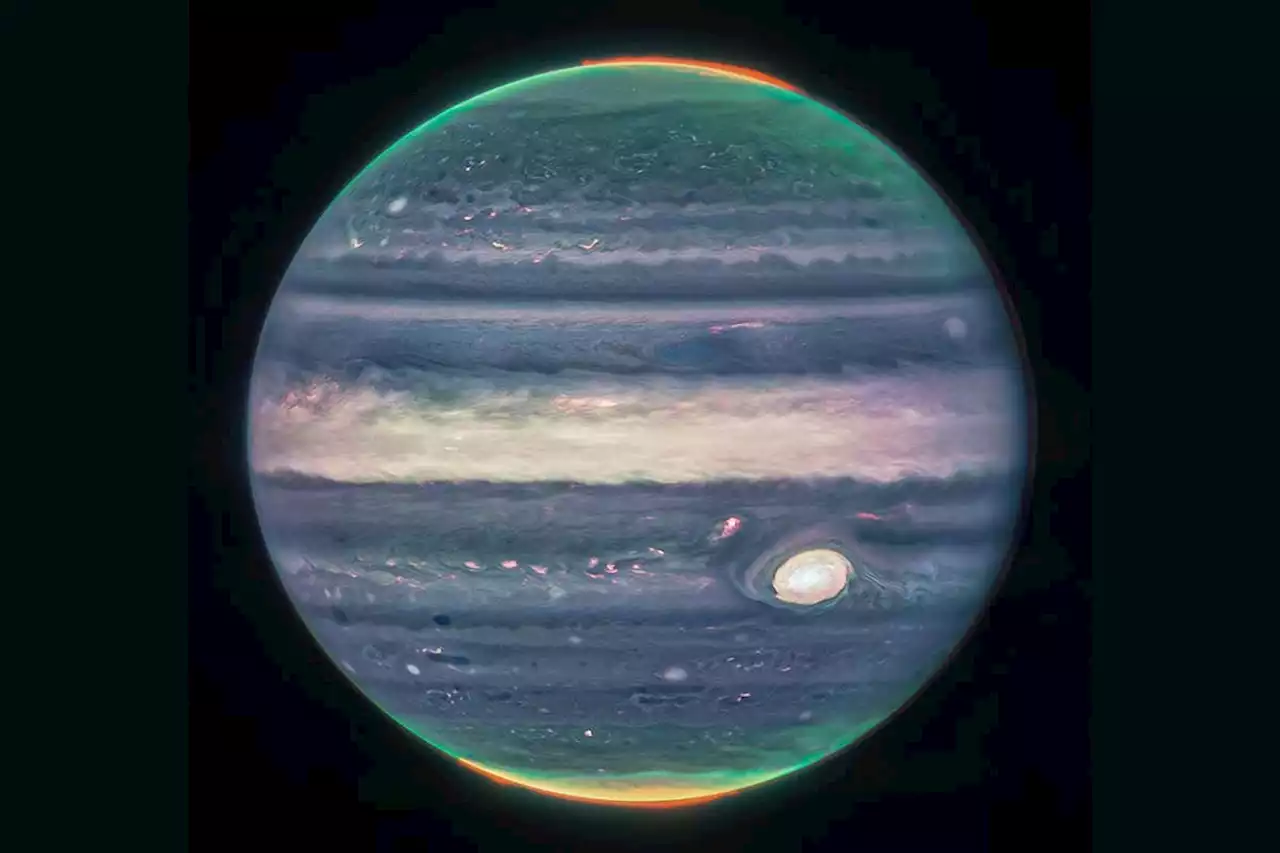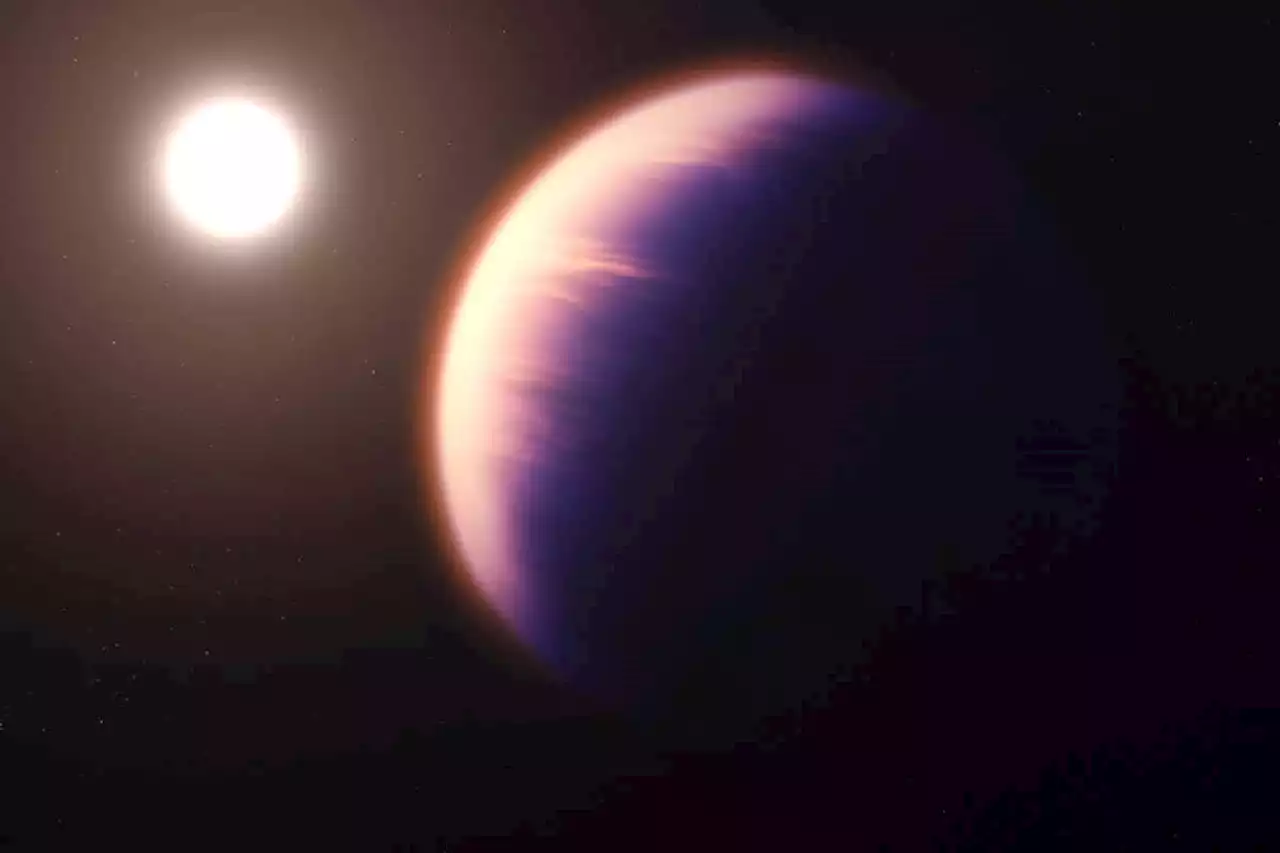The James Webb Space Telescope detected carbon dioxide in the atmosphere of an exoplanet for the first time, and the observations contain hints of a mystery about this distant world
NASA’s James Webb Space Telescope has spotted carbon dioxide in the atmosphere of a planet 700 light years away called WASP-39b. This is the first time the compound has been found in anyWASP-39b is huge. It has a mass similar to Saturn’s and
a diameter 1.3 times that of Jupiter. It orbits relatively close to its star, giving it an average temperature around 900°C – the high temperature puffs up the atmosphere, making it easier for JWST to see starlight shining through it., molecules in the atmosphere absorb some of the light in unique wavelength ranges. Carbon dioxide absorbs infrared light, and previous telescopes didn’t observe in the right range or with the appropriate method to pick out its signature.
The researchers found that WASP-39b has more carbon and oxygen than its host star, implying that it didn’t form when gas around the star collapsed all at once, but rather itsformed first and then accreted the gas that makes up its atmosphere. This is similar to how we think the planets in our own solar system formed, and studying the exoplanet’s atmosphere in more detail could reveal more details as to how and where it formed.
Aside from carbon dioxide, the researchers found another bump in their data, indicating that something unexpected in WASP-39b’s atmosphere was absorbing some of the starlight. “There’s something else there, some other molecule or some kind of cloud or haze – something that’s not predicted by the basic model” of exoplanet atmospheres, says Kempton.
The fact that we were able to see carbon dioxide in this gas giant’s atmosphere is a good sign for our ability to eventually understand the atmospheres ofsimilar to Earth, one of the main goals of JWST, says Batalha. It may also be useful in the hunt for alien life.
United States Latest News, United States Headlines
Similar News:You can also read news stories similar to this one that we have collected from other news sources.
 James Webb Space Telescope captures images of 'grand design spiral' Phantom GalaxyThe MIRI on the JWST can capture mid-infrared wavelength that allows it to see galaxies, comets, asteroids as well as planetary dust
James Webb Space Telescope captures images of 'grand design spiral' Phantom GalaxyThe MIRI on the JWST can capture mid-infrared wavelength that allows it to see galaxies, comets, asteroids as well as planetary dust
Read more »
 New James Webb Space Telescope Images Show Jupiter’s Auroras, Tiny MoonsThe James Webb Space Telescope took the photos capturing unprecedented views of Jupiter’s northern and southern lights, swirling polar haze and Jupiter’s Great Red Spot.
New James Webb Space Telescope Images Show Jupiter’s Auroras, Tiny MoonsThe James Webb Space Telescope took the photos capturing unprecedented views of Jupiter’s northern and southern lights, swirling polar haze and Jupiter’s Great Red Spot.
Read more »
 JWST has taken even more beautiful images of Jupiter and its auroraThe James Webb Space Telescope has taken new images of Jupiter, showing off its bright hazes, tenuous rings and auroras with the hopes of understanding the entire system better
JWST has taken even more beautiful images of Jupiter and its auroraThe James Webb Space Telescope has taken new images of Jupiter, showing off its bright hazes, tenuous rings and auroras with the hopes of understanding the entire system better
Read more »
 PCSD: Suspects from the murder of James Sanchez arrestedUPDATE: The last suspect has been arrested. Deputies say United States Customs and Border Protection Officers at the Nogales Port arrested 18-year-old Zachary Connor.
PCSD: Suspects from the murder of James Sanchez arrestedUPDATE: The last suspect has been arrested. Deputies say United States Customs and Border Protection Officers at the Nogales Port arrested 18-year-old Zachary Connor.
Read more »
